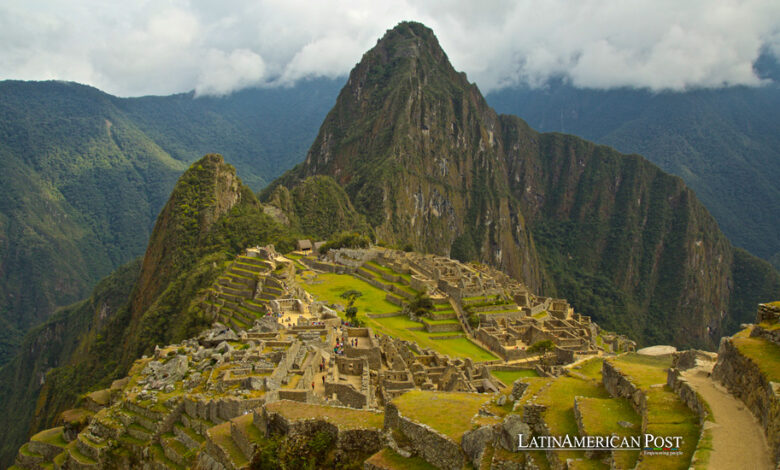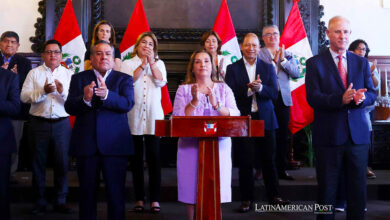Protests Disrupt Access to Machu Picchu, Stranding Tourists Amid Ticketing Dispute

Recent protests over a new ticketing system in Peru have significantly disrupted access to Machu Picchu, leaving tourists stranded and posing challenges to the local tourism industry already recovering from civil unrest.
Turmoil at Machu Picchu
The serene beauty and historical allure of Machu Picchu, nestled high in the Andes, have long drawn visitors from across the globe to Peru. Yet, this iconic Incan heritage site, revered for its architectural and cultural significance, has become the center of a contentious dispute. Protests sparked by local dissatisfaction with a new ticketing system have led to the blockade of access routes, suspending rail transport and leaving tourists stranded, underscoring the delicate balance between preserving heritage sites and managing tourism.
The crux of the unrest began late last week, as demonstrators, comprising travel unions, tour operators, and residents, initiated protests against the government’s decision to consolidate ticket sales for Machu Picchu. This move, intended to streamline access and improve visitor experience, has instead fueled fears of monopolization and adverse impacts on local businesses. The protesters argue that the new electronic ticket sales platform could lead to “privatizing” sales, diverting profits away from the community to a single firm, a concern that resonates deeply with those whose livelihoods are intertwined with the influx of tourists.
The situation escalated quickly, with safety concerns halting train services to Machu Picchu since Saturday. Despite ongoing discussions to resolve the impasse, travel links remained closed into Monday, leaving hundreds of would-be visitors in limbo. The dispute has inconvenienced tourists and delivered a significant blow to Peru’s tourism industry, which is still grappling with the aftermath of last year’s widespread civil unrest. This sector, particularly vital in the southern Andean region, plays a crucial role in the country’s economy, not least because of its connection to the lucrative copper industry.
Minister’s Intervention
In response to the crisis, Peru’s Minister of Culture, Leslie Urteaga, traveled to the region to broker peace. Yet, as round-table discussions entered their second day, a resolution to the “indefinite strike” seemed elusive. The deadlock highlights a broader challenge facing heritage sites worldwide: balancing the preservation of cultural and historical treasures with modern tourism demands and local communities’ economic needs.
The concerns of the community representatives in Machu Picchu are not unfounded. The advent of digital platforms and the consolidation of ticket sales, while potentially reducing bottlenecks and improving the visitor experience, can marginalize local operators. Moreover, the fear of “privatizing” access points to a growing trend where the benefits of tourism increasingly accrue to a select few rather than the broader community that sustains and is sustained by these heritage sites.
The backdrop to this dispute is the broader issue of managing tourist numbers in a sustainable and respectful way to the heritage site itself. Agencies responsible for the care and preservation of Machu Picchu have long warned about the dangers of overcrowding and the risks of tickets being oversold. These challenges have forced authorities to seek innovative solutions to control visitor numbers, mainly as travel rebounds after the pandemic. The pandemic has reshaped tourism dynamics, with destinations worldwide struggling to find a balance between welcoming tourists back and ensuring that their arrival does not compromise public health or the integrity of the sites they visit.
Global Relevance
This latest episode in Peru is a microcosm of the tensions that arise at the intersection of tourism, heritage preservation, and community welfare. Like many other heritage sites, Machu Picchu faces the complex task of navigating the expectations of an international clientele eager to explore its wonders, the local communities whose cultures and economies are inextricably linked to the site, and the imperative to preserve the site for future generations. The protests and the ensuing disruption are a stark reminder of the need for inclusive, transparent decision-making processes that consider the diverse stakeholders involved in heritage tourism.
As discussions continue to resolve the current standoff, the situation at Machu Picchu offers valuable lessons for other heritage sites grappling with similar issues. It underscores the importance of community engagement and the need for tourism management strategies that are sustainable, equitable, and sensitive to the cultural and historical significance of such sites. Moreover, it highlights the potential pitfalls of overly centralizing ticket sales and the importance of ensuring that the economic benefits of tourism are widely distributed.
Complex Realities for Tourists, Locals, and Authorities
For tourists caught in this dispute, the experience is a stark reminder of the complexities underlying the seemingly serene landscapes and ancient ruins they journey to see. For the local communities and businesses, the protests are a fight for survival and relevance in an increasingly digital and centralized tourism economy. For the authorities, the challenge is to mediate these tensions in a way that honors the legacy of Machu Picchu, protects the interests of its local stewards, and ensures that visitors can experience this ancient wonder now and in the future.
Also read: Bahamas Battles Rising Crime Attempting to Keep Pristine Tourist Haven Image
The unfolding situation at Machu Picchu is more than a mere inconvenience for travelers; it is a poignant illustration of the challenges facing heritage tourism today. As Peru seeks to navigate this crisis, the eyes of the world are watching, hoping for a resolution that respects the needs of all parties involved and preserves the integrity of one of South America’s most treasured sites.





